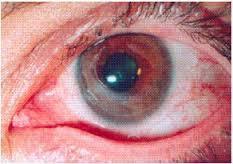Elimination of Germinal Center-Derived Self-Reactive B Cells Is Governed by the Location and Concentration of Self-Antigen
Immunity, 08 November 2012
10.1016/j.immuni.2012.07.017
Authors
Tyani D. Chan, Katherine Wood, Jana R. Hermes, Danyal Butt, Christopher J. Jolly, Antony Basten, Robert Brink
Summary
Secondary diversification of the B cell repertoire by immunoglobulin gene somatic hypermutation in the germinal center (GC) is essential for providing the high-affinity antibody specificities required for long-term humoral immunity. While the risk to self-tolerance posed by inadvertent generation of self-reactive GC B cells has long been recognized, it has not previously been possible to identify such cells and study their fate. In the current study, self-reactive B cells generated de novo in the GC failed to survive when their target self-antigen was either expressed ubiquitously or specifically in cells proximal to the GC microenvironment. By contrast, GC B cells that recognized rare or tissue-specific self-antigens were not eliminated, and could instead undergo positive selection by cross-reactive foreign antigen and produce plasma cells secreting high-affinity autoantibodies. These findings demonstrate the incomplete nature of GC self-tolerance and may explain the frequent association of cross-reactive, organ-specific autoantibodies with postinfectious autoimmune disease.
A summary in Garvan Institute:
http://www.garvan.org.au/news-events/news/how-infection-can-trigger-autoimmune-disease.html
A previous publication of this theory:
Mechanisms for the induction of autoimmunity by infectious agents
Kai W. Wucherpfennig
Published in Volume 108, Issue 8 (October 15, 2001)
J Clin Invest. 2001;108(8):1097–1104. doi:10.1172/JCI14235.
http://www.jci.org/articles/view/14235
 Your new post is loading...
Your new post is loading...
 Your new post is loading...
Your new post is loading...





















Sjögren's syndrome (SS) is an autoimmune disease characterized primarily by lymphocytic infiltration of the exocrine glands, and autoantibody production. Multiple environmental factors affecting an individual with a genetic susceptibility may trigger the development of SS. Herein, we aimed to evaluate links between the different pebbles in the mosaic of SS. Demographic, clinical data and blood samples were gathered from 82 consecutive patients with SS, and 139 healthy controls. Samples were analyzed for infectious serology and auto-antibodies as well as for relevant genetic mutations (TAP genes) and cytokines levels. An immune response (IgG) against Epstein–Barr virus (EBV) early antigen (EA) was positively associated with SS (OR 4; 95% CI: 1.82–8.83, p = 0.001) while a protective effect of IgG anti-cytomegalovirus (CMV) was observed (OR 0.3; 95%CI: 0.16–0.74, p = 0.009). Anti-Ro/SSA, anti-LA/SSB, anti-nuclear, anti-gliadin, anti-TTG-IgG and anti-RNP antibodies were statistically more prevalent among SS patients than controls. Notably, the presence of anti-Ro/SSA and anti La/SSB correlated with anti-EBVEA IgG (OR 3.1; 95%CI: 1.08–8.74) and (OR 3.9; 95%CI: 1.37–10.96) respectively. Autoantibodies, cytokines and several genetic markers correlated with clinical manifestation of SS. Our data suggest that infectious agents may play both a causative and protective role in the pathogenesis of SS. Moreover certain autoantibodies, cytokines and specific TAP alleles correlate with clinical manifestations of SS, and may enable better prediction and/or directed therapy once confirmed in future studies.